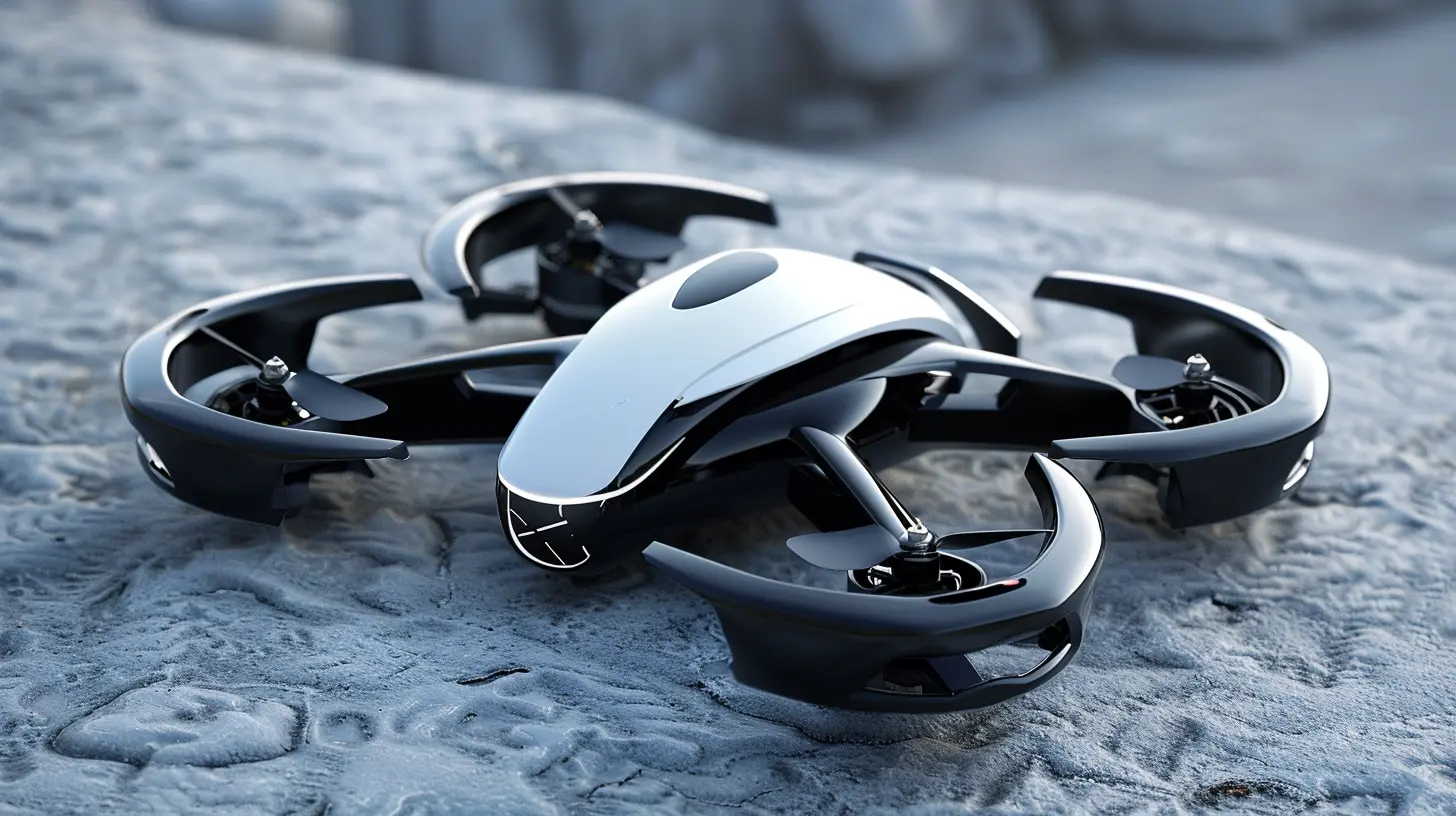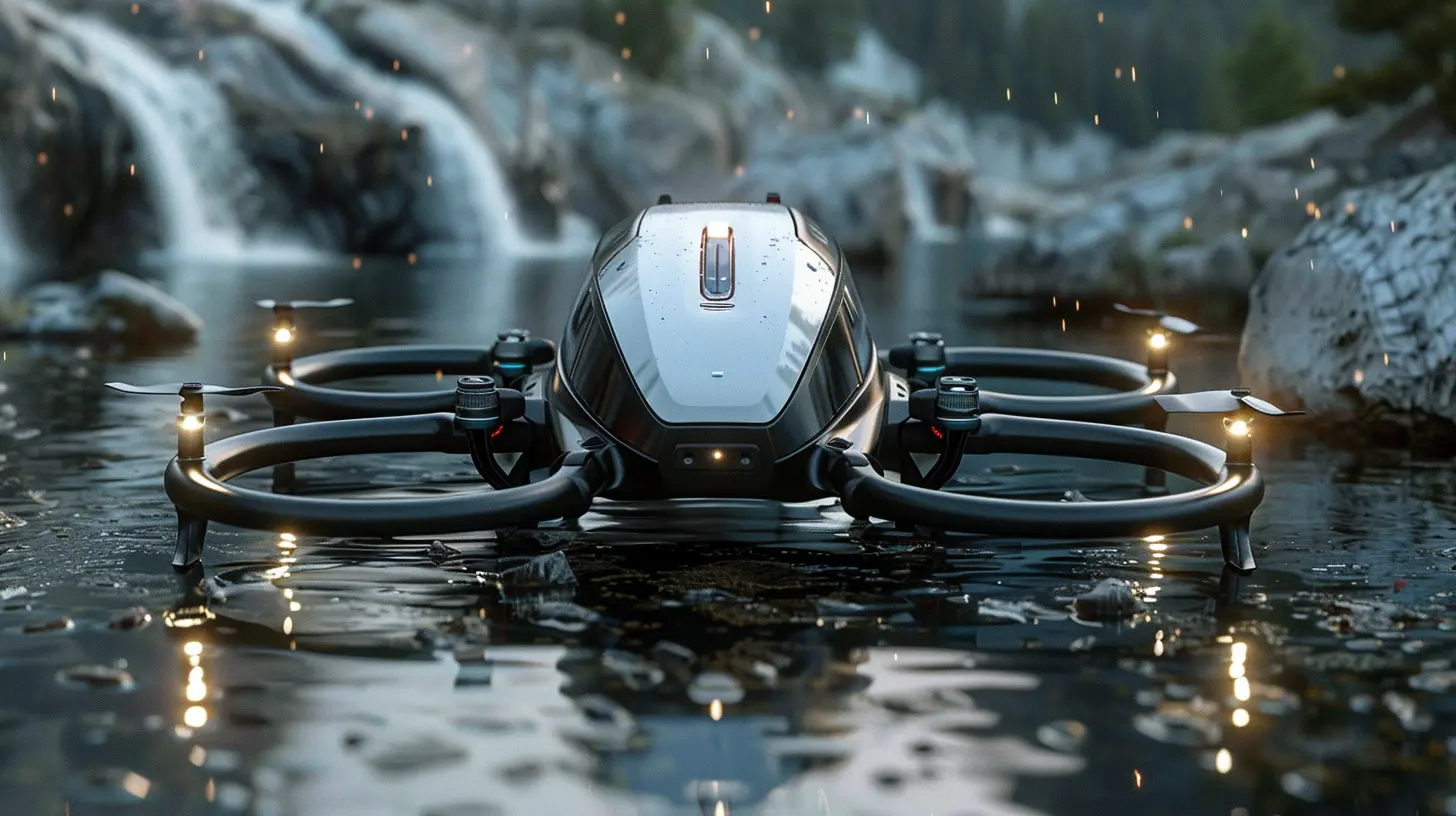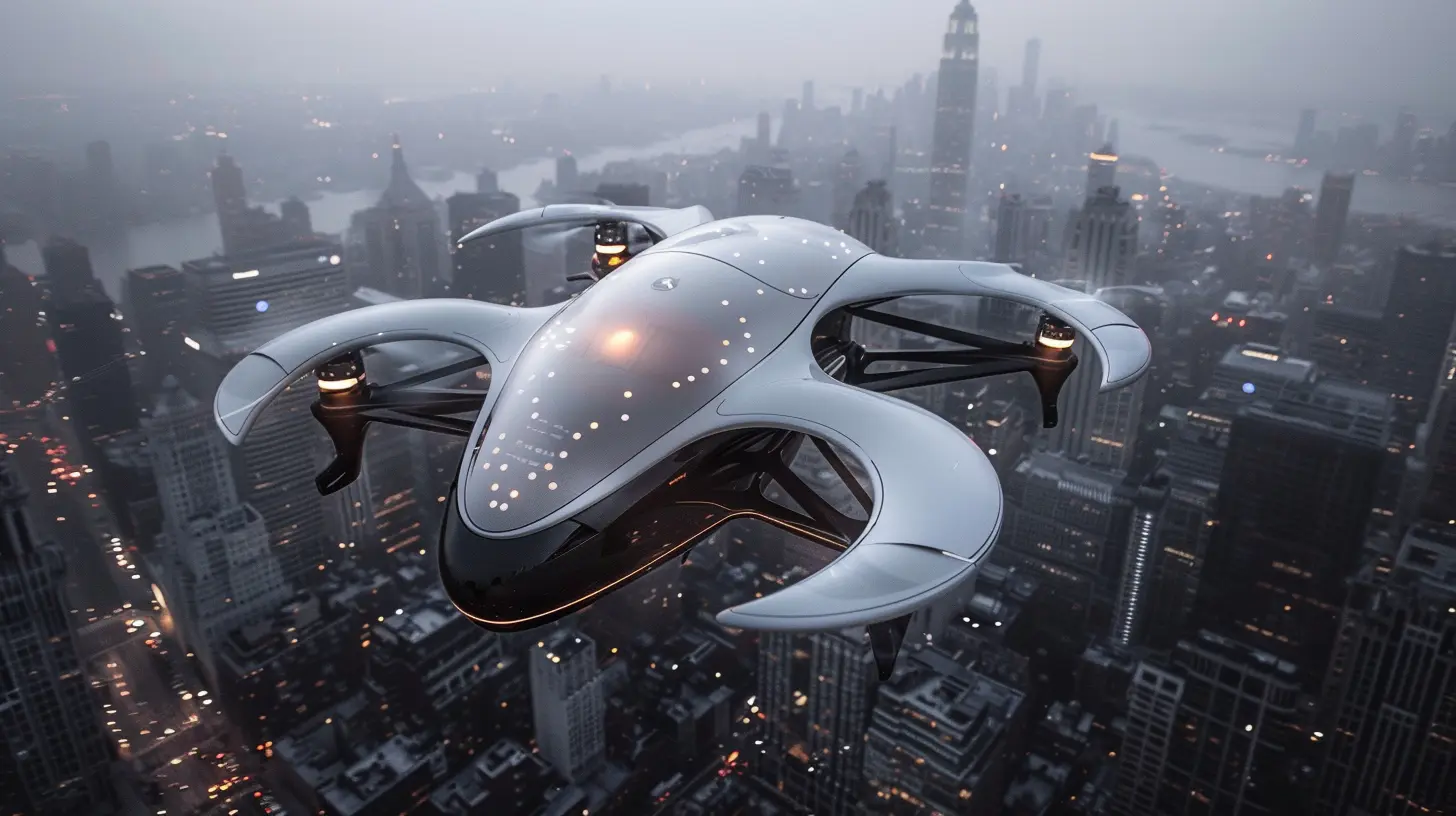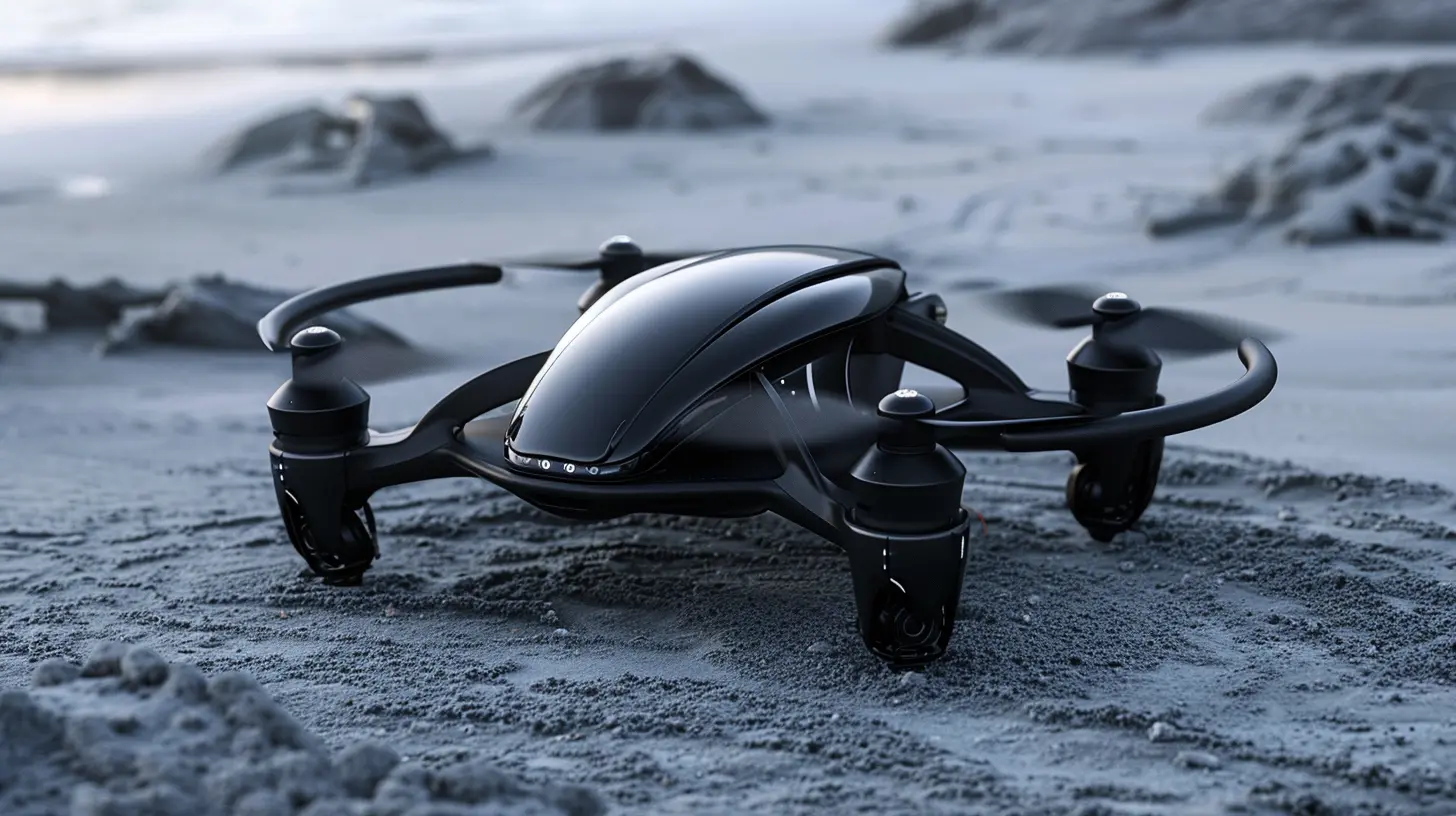Autonomous Drones: The Next Frontier in Consumer Tech
15 August 2025
Technology has always been about pushing boundaries, and right now, one of the most exciting frontiers is autonomous drones. While drones themselves are not exactly new, the idea that they can fly, navigate, and complete tasks all on their own — without a human pilot — is what’s making waves in the tech world. It’s like something straight out of a sci-fi movie, but we’re already seeing it in action.
So, if you’re into gadgets and tech, or just curious about how the future is shaping up, you’re in for a treat. Autonomous drones are more than just buzzing toys in the sky. They’re transforming industries, changing the way we interact with the world, and they’re about to become a big part of our everyday lives. Let’s take a deep dive into why autonomous drones are the next big thing in consumer tech.

What Exactly Are Autonomous Drones?
Let’s start with the basics. A drone, as you probably know, is an unmanned aerial vehicle (UAV). Traditionally, these drones are controlled by humans, either through a remote or an app. They’re used for everything from capturing jaw-dropping aerial photos to delivering packages.But here’s where it gets interesting: autonomous drones take the “human” out of the equation. These drones are equipped with artificial intelligence (AI) and advanced sensors, allowing them to navigate, avoid obstacles, and make decisions — all without any human input. Imagine flying a drone without actually needing to control it. Sounds futuristic, right?
In essence, they’re like the self-driving cars of the sky, capable of figuring things out on their own. That’s a game-changer.

How Do Autonomous Drones Work?
You might be wondering, “How do these things actually work?”Autonomous drones are packed with sophisticated technology. Here’s a simplified version:
1. AI and Machine Learning
At the heart of autonomous drones is AI. Through machine learning algorithms, these drones can adapt to different environments. They “learn” from the data they collect during their flights, which means they get better at their tasks over time. Think of it like teaching a dog to fetch. The more it does it, the better it gets. But in this case, the drone teaches itself.2. Sensors and GPS
For a drone to fly without crashing into trees, buildings, and, well, people, it needs to "see" what's around it. That’s where sensors come in. These include cameras, infrared sensors, and even LiDAR (Light Detection and Ranging) systems, which are also used in autonomous cars. GPS allows them to know exactly where they are in the world, ensuring they stay on course.3. Obstacle Avoidance
Most autonomous drones come with obstacle avoidance technology. Using the data from its sensors, the drone can detect objects in its flight path and maneuver around them. It’s like when you walk down a busy street and instinctively dodge other people — the drone does the same thing but in the air.4. Pre-programmed Flight Paths
Many autonomous drones can be programmed to follow specific instructions. For example, you can set a flight path using a map, and the drone will follow it without you needing to touch the controls. It’s like giving your drone a chore list and watching it complete each task without needing to remind it.5. Real-Time Decision Making
One of the most impressive features is real-time decision-making. If a drone encounters a new obstacle or a change in weather, it can adjust its flight path or speed to handle the situation. It’s almost like having a pilot onboard… except there’s no one at the controls!
Why Are Autonomous Drones So Important?
Okay, so now you know what autonomous drones are and how they work. But why should we care? Why is everyone so excited about these flying gadgets?1. Convenience Like Never Before
One word: convenience. Imagine being able to send a drone out to survey your property, deliver a package, or even film an event — all without needing to pilot it yourself. This hands-off approach could save you time and effort, making drones more accessible to people who might not be tech-savvy.2. Efficiency in Industries
Autonomous drones are already making waves in industries like agriculture, construction, and logistics. In farming, for example, drones can survey vast fields, identify problem areas, and even spray crops with precision. In construction, drones can map out sites and inspect hard-to-reach areas. By automating these tasks, businesses can save time, reduce costs, and increase productivity.3. Safer Operations
In certain industries, sending a human into a situation can be dangerous. Think about search and rescue missions, inspecting power lines, or monitoring disaster zones. Autonomous drones can be deployed in dangerous environments without putting anyone at risk. They can fly into areas that are hard to reach or even too hazardous for humans. It's like sending a robot scout before the cavalry arrives.4. Environmental Impact
Here’s something many people don’t think about: drones could have a positive impact on the environment. For example, drones could be used to monitor wildlife, track deforestation, or even help plant trees in hard-to-reach areas. And because they’re typically battery-powered, they have a much smaller carbon footprint compared to traditional machinery.5. Consumer Applications
Beyond industrial use, autonomous drones have plenty of consumer applications. Want to capture stunning aerial footage of your vacation without fiddling with controls? An autonomous drone can do that. Need a drone to follow you while biking or hiking to capture epic action shots? Yep, an autonomous drone has your back.
Challenges Autonomous Drones Face
Of course, nothing is without its challenges. As exciting as autonomous drones are, there are still a few hurdles that need to be overcome before they become mainstream.1. Regulations
When it comes to flying objects zipping through the skies, safety is a big concern. Governments have strict regulations about where and how drones can fly. Many countries require drone operators to have a license or permit. As autonomous drones become more common, these regulations will need to evolve to ensure safety for everyone.2. Battery Life
Battery life remains a significant limitation for drones. Most consumer drones can only fly for about 20-30 minutes on a single charge. For drones to be viable for longer tasks, like deliveries or surveillance missions, battery technology will need to improve.3. Privacy Concerns
As with any technology that involves cameras and data collection, privacy is a concern. Autonomous drones can capture images and video without human oversight, raising questions about how that data is being used. It’s a delicate balance between innovation and privacy, and it’s something that will need to be addressed as the technology progresses.4. Cost
Right now, autonomous drones can be expensive, especially for consumers. While prices are expected to drop as the technology becomes more widespread, cost remains a barrier for many people. However, as with most tech, we can expect prices to decrease over time.The Future of Autonomous Drones
So, what does the future hold for autonomous drones? Well, the sky (quite literally) is the limit. In the next few years, we can expect to see drones taking on more complex tasks, becoming more affordable, and integrating even deeper into our daily lives.Imagine a world where drones deliver groceries to your doorstep, monitor traffic in real-time, or even help with emergency medical supplies. Autonomous drones could revolutionize transportation, logistics, and even healthcare.
And it’s not just about flying drones. Ground-based and water-based autonomous drones are also in development, meaning that these robots could one day be navigating not just the skies, but the land and sea as well.
Are Autonomous Drones the Next Big Thing in Consumer Tech?
In a word: absolutely. Autonomous drones represent the next evolution in drone technology, offering exciting possibilities for both consumers and industries. From capturing stunning aerial footage to performing life-saving missions, these drones are more than just cool gadgets — they’re tools that will change the way we live and work.As tech continues to advance, we’re likely to see drones become smarter, more capable, and more integrated into our lives. The convenience, safety, and efficiency they offer are hard to ignore. So, whether you’re a tech enthusiast or someone who just loves gadgets, keep your eyes on autonomous drones — they’re not just the future; they’re already here.
all images in this post were generated using AI tools
Category:
Tech TrendsAuthor:

Reese McQuillan
Discussion
rate this article
1 comments
Paul Mendez
Flying robots delivering snacks? Count me in! Just don’t let them steal my fries!
August 24, 2025 at 2:50 AM

Reese McQuillan
Haha, don’t worry! These drones are programmed to deliver, not to snack! 🍟🚁


